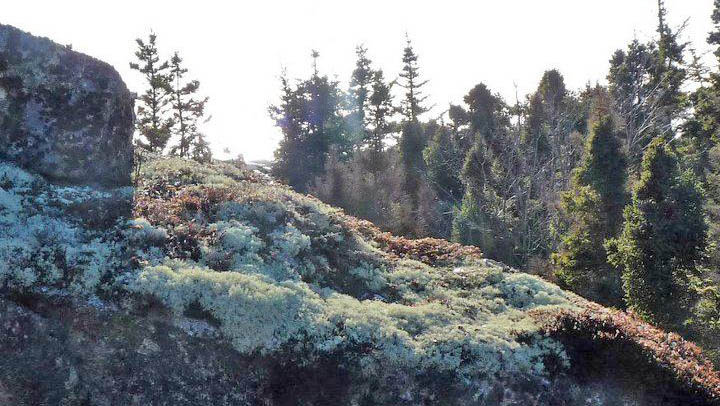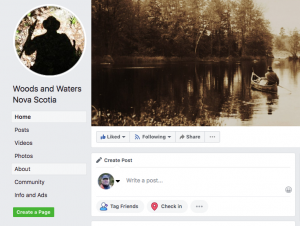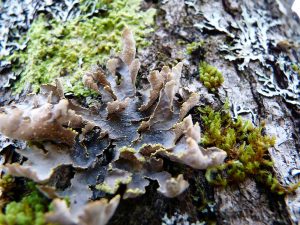Lichens NS, “where a group of like-minded lichen enthusiasts of varying levels of expertise join together for the facilitation of lichen stewardship in Nova Scotia, where many lichen species are known to be rare or threatened” is holding a poll to vote for a Provincial lichen species.
Go to Lichens NS to vote and learn more about our lichens. (Poll closes end of January 23rd.)
A few of the things I love about lichens:
-
- You can collect a lichen or group of lichens, put them in a paper envelop and leave it on the shelf for many years, take the lichens out, put them in a dish in the sun and they will start photosynthesizing and growing again. (‘Same for Mosses). So ‘easy to collect and store and fun for kids (anyone really), e.g., make a lichen and moss garden in a bowl. Lichens have even survived one and a half years on the exterior of the International Space Station
- Lichens are a very diverse, interesting group that can be enjoyed any time of year (‘Same for Mosses). Nova Scotia is a hotspot for biodiversity of lichens and mosses (although we are degrading forest habitats very quickly).
- Troy McMullin describes lichens as the “Corals of the Forest” because like reef-building corals, they are a symbiosis between a photosynthetic partner(s) and a heterotrophic partner(s). (A heterotroph is an organism requiring food).
- There’s lots known about lichens of Nova Scotia. Just do a Google Search for Lichens of Nova Scotia to see a whole bunch of interesting stuff
- Research in Nova Scotia has shown how lichens can be used as indicators of air quality or more broadly, Ecosystem Health , and of Old Growth
View also:
What lichens and lichenologists can and sometimes cannot tell us
Post on NSFN Nov 4, 2016
Highly recommended introductory field guide:
Common Lichens of Northeastern North America
by “our own” Troy McMullin and Frances Anderson (2015).
Troy McMullin studied lichens in NS for his Master of Environmental Studies degree at Dalhousie University, went on to do a PhD on lichens and is now “the Lichen Guy” at the Canadian Museum of Nature.
Frances Anderson is a largely self-taught lichenologist, now one of our leading experts.
“As a librarian, Frances Anderson knew there were few ways for regular folks to find out about lichens. Ignited by the publication of Lichens of North America, she began studying them in earnest. Years of study and combing the back country of Nova Scotia led her to realize that the picture of the province’s lichen flora was incomplete…” read more
Tip of the Hat to NH for telling me about the poll

————-
 Please comment on NSFN content via WWNS; you can simply reference the content on NSFN in a post on WWNS.
Please comment on NSFN content via WWNS; you can simply reference the content on NSFN in a post on WWNS.


